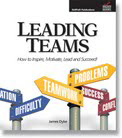One thing I have learned (and seen up close!) is that there is a fine line between confidence and arrogance!
Remember that quote? I wrote it in an article I posted just two weeks ago on October 30th. The article focused on the importance of avoiding arrogance and developing true confidence instead.
In this issue I’m going to explore another challenge that leaders face in every kind of organization—the danger that their success and power will degenerate into hubris and self-seeking.
I’ve tackled the issue of power and its corruption of leaders in previous posts. You can read them here:
Both articles are filled with practical tips for putting a check on personal corruption and for sharing power with colleagues and subordinates. And both articles are worth the read!
Coincidentally, I recently ran across an insightful article by Julie Battilana and Tiziana Casciaro that was published in the Harvard Business Review. Their research added some thought-provoking points to the conversation:
“Although power is essential to taking charge and driving change, it makes leaders vulnerable to two traps that can not only erode their own effectiveness but also undermine their team’s. Hubris—the excessive pride and self-confidence that can come with power—causes people to greatly overestimate their own abilities, while self-focus makes them less attentive to subordinates, diminishing their ability to lead successfully.”
So… How do you avoid the odious sham of prideful arrogance and in its place, develop actual, genuine HUMILITY and replace isolating self-absorption with true EMPATHY?? This is a challenge that every leader and every team leader must address effectively, in order to grow as a person and succeed in a career.
First…let’s agree that humility enables a leader to be more effective!
Is that true???
In a 2018 Wall Street Journal web article, author Sue Shellenbarger examined this issue through the lens of recent research and studies in the workplace. She writes:
“Humility is a core quality of leaders who inspire close teamwork, rapid learning and high performance in their teams, according to several studies in the past three years. Humble people tend to be aware of their own weaknesses, eager to improve themselves, appreciative of others’ strengths and focused on goals beyond their own self-interest.”
She also points out the impact with employees:
“Among employees, it’s linked to lower turnover and absenteeism. These strengths are often overlooked because humble people tend to fly under the radar, making outsiders think it’s their teams doing all the work.”
According to Ryne Sherman (chief science officer for Hogan Assessments):
“Most of the thinking suggests leaders should be charismatic, attention-seeking and persuasive. Yet such leaders tend to ruin their companies because they take on more than they can handle, are overconfident and don’t listen to feedback from others.”
He adds:
“Humble leaders can also be highly competitive and ambitious. But they tend to avoid the spotlight and give credit to their teams. They also ask for help and listen to feedback from others, setting an example that causes subordinates to do the same.”
His observations underscore the important points I shared in my earlier articles. They also point leaders in the right direction to understand what true humility looks like—behaviorally as well as attitudinally. (More about this later).
According to lead researcher Bradley P. Owens (an associate professor of business ethics at Brigham Young University), teams with humble leaders performed better and did higher-quality work than teams whose leaders exhibited less humility.
Additionally, a study of 105 computer hardware and software firms published in the Journal of Management showed that companies with humble chief executives are more likely than others to have upper-management teams that work smoothly together, help each other, and share decision-making.
NOTE: Researchers also found that such companies also are likely to have smaller pay gaps between the CEO and other senior executives. These factors predict closer collaboration among all senior executives, which in turn leads to greater companywide efficiency, innovation and profitability.
Having said all this, is it possible that a given organization might have special needs that would demand a more authoritative, “top-down” leadership style? Of course! However, I have found that a collaborative leadership style, in my experience, has value even in leading turn-arounds!
Author Bill Taylor agrees with me on this point! In a 2018 Harvard Business Review article, he writes:
“Humility can feel soft at a time when problems are hard; it can make leaders appear vulnerable when people are looking for answers and reassurances. Of course, that’s precisely its virtue: The most effective business leaders don’t pretend to have all the answers; the world is just too complicated for that. They understand that their job is to get the best ideas from the right people, whomever and wherever those people may be.”
In his article, he pushes for the idea that an effective leader can be humble, but still have ambition to succeed. He writes about a group of HR professionals at IBM who embraced a term to capture this idea. They believed that effective leaders demonstrated what they coined as humbition–a healthy combination of humility and ambition. This group at IBM wrote, “We notice that, by far, the lion’s share of world-changing luminaries are humble people. They focus on the work, not themselves. They seek success—they are ambitious—but they are humbled when it arrives… They feel lucky, not all-powerful.”
There is a certain aspect to humility that is a challenge for human nature.
Edgar Schein points this out in his book, Humble Inquiry. He describes what he calls, “here-and-now humility,” which he considers the most relevant for leaders with ambition. It’s the humility we feel when we realize we are dependent on someone else in the workplace. It’s humbling, because we experience our vulnerability in that situation—it reminds us that we are not all-knowing, all-powerful, all-sufficient—that we lack absolute and independent control! Most people are uncomfortable with the feeling of vulnerability. It’s something we try to avoid.
Schein points out the choices we have in that situation:
- I can embrace my vulnerability; admit my dependency; reach out for help; and…Succeed.
- I can deny my vulnerability; resist my dependency; try to do things on my own; and…Fail.
- I can use the same defense mechanism of denial; simply avoid any task that requires someone’s help; and…Escape feeling humble and vulnerable; but…Experience a different kind of failure—the failure of inaction…the failure of playing it “safe.”
Up Close and Personal
Early in my career, I was driven by my own personal insecurity and inner, emotional need for achievement. I was determined to succeed completely on my own—without anyone’s help. In order to feel good about my accomplishments, I felt it was essential for me to be able to say, “I did this. I did this all by myself. Nobody helped me. It belongs to ME 100%.” Yep…I was THAT dysfunctional!
As I began to grow up and deal with my own emotional issues, I also learned something surprising about highly effective leaders—they are experts at collaboration. And, of course, I saw this even more with leaders at the upper levels of their organizations. I eventually came to the conclusion:
The higher you rise in ANY organization, the more your success depends on other people, over whom you have little or no direct authority!
This is why highly effective leaders develop skill in collaboration, cooperation, negotiation, and consensus-building in order to achieve success. (I also learned that most highly effective leaders are also generous with sharing credit, praise, and recognition!)
So… What can YOU do, to develop the right kind of healthy humility????
Here are some suggestions from the experts:
1. Be a model for humility—for honest vulnerability. Make it okay to admit a lack of knowledge. Be willing to say to your people out loud, “I don’t know” when that’s the reality. In their article, Battilana and Casciaro remind us:
“Research confirms that when a leader expresses humility, the quality of team members’ contributions improves, and job satisfaction, retention, engagement, and openness to learning rise as well.”
2. Make it “safe” for your people to embrace and express THEIR vulnerability. Your people will feel “safe” to tell you what they really think and feel if you:
- Request and encourage their honesty
- Listen carefully when they speak
- Avoid interrupting them
- Accept their information without judging them
- Focus on responding constructively to the situation
- Thank them for their honesty—reinforce their communication with recognition and affirmation
Up Close and Personal
In my research, I read about a Toyota manager who was assigned a Japanese expat as his direct supervisor. After a number of weeks and regular meetings, the Japanese executive shared this observation with his American direct report, “I noticed in our team meetings that you never share any problems.” The American manager was taken aback. He was laboring under the typical “American” assumption that having problems (and especially sharing them in team meetings!) was a sign of weakness—or worse—projected an image of incompetence. “I didn’t think it was appropriate,” he replied. His Japanese boss reflected a very different “Japanese” view of management and teamwork. He told the manager, “Our purpose, as a team, is to improve the work. We do that better when we also help solve each other’s problems.”
It reminds me of one of my favorite Ken Blanchard sayings:
None of us is as smart as ALL of us.
3. Create opportunities for honest input from others. Effective leaders exploit many different conduits for open communication:
Personal one-on-one relationships with mentors, key colleagues and subordinates
Formal opportunities specifically designed to surface information—surveys, questionnaires, 360-degree instruments, roundtables, open forums, team meetings, project “de-briefs”
Serendipitous encounters—at lunch tables, in the hallways, during office “walk-throughs”
Most important in these encounters is for leaders to get honest input about THEIR work; THEIR performance; THEIR blind spots and needs for development. Remember—true humility requires a leader to have an accurate perception of their own abilities, accomplishments, and limitations. It requires a strong dose of healthy self-awareness.
The dilemma for leaders is how to measure their self-awareness, especially if blind spots exist. If you’re not self-aware, how can you possibly know it, since the awareness of the problem requires the quality of self-awareness itself??
Help is a click away. I have created a self-awareness assessment tool especially-designed to help leaders measure and explore their level of self-awareness. It’s free (with no strings attached) and you will find it on the Resource page of my blogsite. Here’s the link: https://thebossdoctor.net/resources/
Up Close and Personal
One manager I know had a simple (and enjoyable!) way to create a healthy forum for open communication AND reinforce the cohesiveness of his team. He and his team practiced a ritual they called “Friday Lunch.” Every Friday, the team would pick an inexpensive, informal venue for lunch where they could gather, inhabit a single area where they could all be together, and enjoy a lunch filled with informal, personal conversation. Yes, they talked about their weekend plans and other personal topics, but they inevitably “talked shop” as well. The manager told me it was their way of “processing” the week of work—leading to helpful shared information and much valuable insight.
4. Celebrate success, but don’t rest on your laurels. Help your team understand that today’s success doesn’t last. Eventually it will become outdated, obsolete, and require a “next generation” of success. Moore’s Law is one of the more specific, measurable examples of the demand for continued development—“success” at higher and higher levels. As a consultant, I have personally observed how easy it is for an organization’s past (or current!) success to become an obstacle to its future success. The organizational landscape is littered with the corpses of businesses and non-profits that failed to outlive their own success. It’s up to YOU as a leader to make sure that kind of hubris doesn’t destroy YOUR organization!
Up Close and Personal
The harsh reality of CoVid and the restrictions it provoked pushed ME to add virtual services to my own business. (I don’t think I’m alone in that regard, by the way!) Though my foundational strength is my ability to facilitate learning in person, I have also been forced to develop the ability to facilitate effectively through virtual events. Really, I had to develop that ability in order to remain competitive!
Humility also enables us to counteract our human tendency to become self-oriented. Prideful ego isolates us from others and separates us from reality. There’s an old expression from the entertainment industry that describes this: We start believing our own publicity!
Humility allows us to connect with others, and experience healthy empathy. We can encourage this process a number of ways:
1. Get to know other people and their jobs. I have written about the value of organizational networking and how your knowledge of other people’s work can be of value to you and your team and your success. You can find plenty of insight with these links:
http://thebossdoctor.net/wp-content/uploads/2020/10/TRACKS12.pdf
http://thebossdoctor.net/wp-content/uploads/2020/10/PTRAIN12.pdf
Here’s the simple truth: The more you know about someone else’s situation, the more empathy you’ll feel. Because empathy is really just simple understanding. I have discovered through my own experience:
The more you understand the work of the people you collaborate with… the more effectively you will be able to collaborate with them in the future… and the more effective YOU will be as a result!
Up Close and Personal
If you have ever seen the T.V. show, Undercover Boss, you will know exactly what I mean. When a boss goes undercover and works “on the front line” of their organization, they quickly see things from a different perspective. That fresh view often equips them to make better decisions—about the business AND the people doing it!
2. Practice, model, organize, and measure collaboration and interdependence. It starts with your own team. Making your team meetings a place for honest, open communication sets the stage for effective collaboration. Also, encouraging team members to share their “best practices” sends the strong message: We’re here to help one another succeed. Project team meetings can follow the same approach—using the group to help solve a team member’s individual problem or challenge. Remember the Toyota manager and his Japanese boss!
At MicroSoft, managers are tasked with encouraging and actually measuring collaboration and interdependence. In the performance reviews they conduct, they routinely raise questions like:
- “How did you contribute to the success of others?”
- “How did your results build on the work, ideas, and efforts of others?”
- “What could you have done differently?”
This kind of leadership underscores the reality that employees don’t work in a vacuum—they need to collaborate with others in order to succeed, and their work outcomes affect others in the organization.
3. Connect with the real world. We’ve already seen the importance of connecting with the realities inside the organization. It’s also of tremendous benefit to extend that connection to the world outside the organization.
Start with clients and customers. Make time for field visits; phone calls; lunches. Formal surveys, of course, have their place. But don’t limit yourself to that. Create opportunities for convenient and informal exchanges personally with the people you serve.
Get out into the surrounding communities. I’m referring here to the cities and surrounding communities where your company and its offices are located. And… Also where your company is NOT located, but is doing business! Learn about the various issues people are facing there. Discover ways your organization might be able to have a positive impact, and develop a reputation for caring about people as well as business.
Consider sponsoring or participating in a humanitarian project for the community. I know one large company that joined forces with Habitat for Humanity and promoted a local project by raising money and recruiting volunteers among their employees. I know of another smaller, local “branch office” where the entire office staff volunteered for a day at a local food bank.
These experiences help us as human beings to open ourselves to other people and by doing so, resist the selfish human tendency to become dysfunctionally “self-oriented.”
I’m going to close this article with a thought-provoking quote from Bill Taylor:
“We live in a world where ego gets attention but modesty gets results. Where arrogance makes headlines but humility makes a difference. Which means that all of us, as leaders or aspiring leaders, face questions of our own: Are we confident enough to stay humble? Are we strong enough to admit we don’t have all the answers? Here’s hoping we reach the right answers.”
Until next time… Yours for better leaders and better organizations,
Dr. Jim Dyke – “The Boss Doctor” ™ helping you to BE a better boss and to HAVE a better boss!







